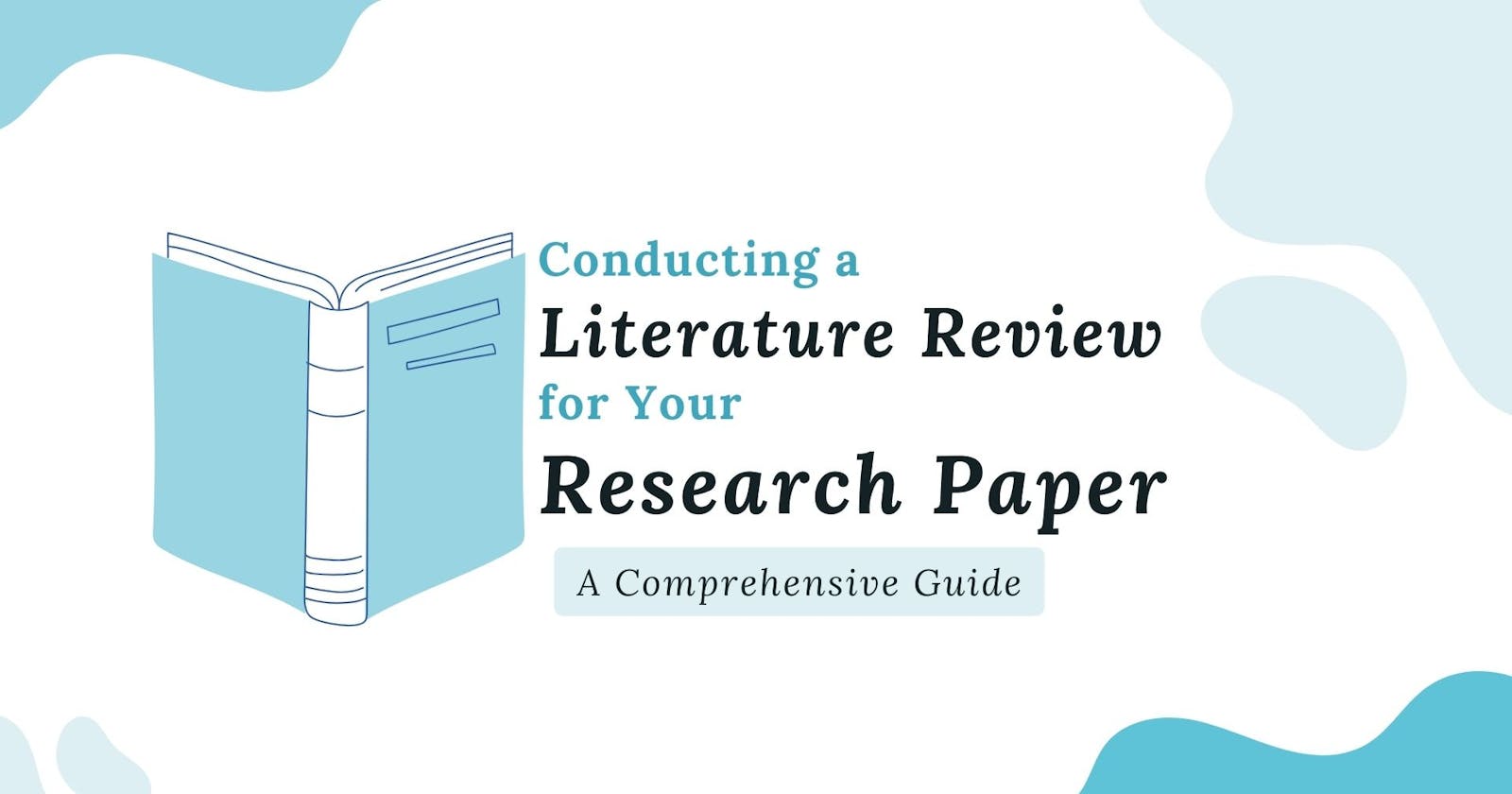Conducting a Literature Review for Your Research Paper: A Comprehensive Guide
Table of contents
No headings in the article.
A well-structured and insightful literature review forms the bedrock of a strong research paper. It demonstrates your understanding of the existing scholarship on your topic, positions your research within that context, and identifies gaps or unanswered questions that your study aims to address. This guide, drawing on current academic practices and updated information, will equip you with the knowledge and tools to craft a compelling literature review, fulfilling academic standards and exceeding the 1500-word mark.
1. Define Your Research Focus and Develop Search Strategies:
Clarity is key: Begin by clearly defining your research question or hypothesis. This will guide your search for relevant literature.
Breadth and depth: Utilize a combination of broad and targeted search terms. Explore academic databases, scholarly journals, books, and credible online resources relevant to your field.
Staying current: Include recent publications alongside seminal works to demonstrate awareness of ongoing discussions and developments. Consider sources published within the last 5-10 years, depending on your field.
Keyword optimization: Use Boolean operators (AND, OR, NOT) and proximity operators (NEAR) to refine your search results. Consult with your librarian or research support services for specialized search techniques.
2. Evaluating and Selecting Sources:
Credibility is paramount: Prioritize sources published in reputable academic journals, peer-reviewed books by established scholars, and recognized institutions. Avoid predatory journals and unreliable websites.
Author expertise: Assess the authors' credentials and track record in your field. Look for publications in renowned journals and citations from other scholars.
Methodological rigour: Evaluate the research methods employed in the studies you consider. Ensure transparency, validity, and reliability in their approach.
Relevance to your research: Select sources that directly address your research question or offer insights into relevant themes, concepts, or debates.
3. Mapping and Analyzing the Literature:
Take organized notes: Employ a note-taking system that captures key findings, methodological details, and critical insights from each source. Include bibliographic information for proper citation.
Identify key themes and arguments: Group sources based on shared themes, methodological approaches, or theoretical frameworks. This helps identify trends, gaps, and areas of disagreement within the field.
Critically evaluate the literature: Analyze the strengths and weaknesses of each study, considering its methodology, findings, and conclusions. Engage in scholarly debate and offer your interpretations where relevant.
Identify gaps and research opportunities: Based on your analysis, pinpoint unanswered questions, inconsistencies in existing research, or unexplored avenues. This will help you justify the significance of your study.
4. Structuring and Writing Your Literature Review:
Introduction: Briefly introduce your research topic and highlight the importance of examining previous research. State your research question or hypothesis.
Literature overview: Group and discuss relevant themes, arguments, and findings from your selected sources. Use transition words to connect points and demonstrate logical flow.
Critical analysis and synthesis: Discuss the strengths and weaknesses of the literature, identify areas of agreement and disagreement, and highlight gaps in existing knowledge.
Conclusion: Summarize the key insights gained from the literature review. Relate these findings to your research question and emphasize the significance of your study in addressing identified gaps or contributing to ongoing discussions.
5. Formatting and Referencing:
Academic style and tone: Maintain a formal and objective writing style with clear and concise language. Avoid colloquialisms and personal opinions.
Proper referencing: Use a consistent referencing style, such as Harvard referencing, to cite all sources used in your literature review. Ensure accuracy and completeness in your references.
Word count: Aim for a minimum of 1500 words, but remember that quality and depth of analysis are more important than strictly hitting a word count.
Additional Tips:
Start early: Dedicate sufficient time to conducting your literature review. It's an iterative process that requires careful exploration and analysis.
Seek feedback: Share your draft literature review with your supervisor, peers, or writing centre for feedback and suggestions.
Stay updated: Remain aware of new publications and developments in your field throughout your research process.
Use visualization tools: Consider mind maps, concept maps, or other visual aids to organize your notes and identify connections between different sources.
Remember: Your literature review is not simply a summary of existing research; it's a critical analysis that demonstrates your understanding of the field and paves the way for your contribution to the knowledge base. By following these guidelines and adapting them to your specific research topic, you can craft a compelling and insightful literature review that sets the stage for a successful research paper.

